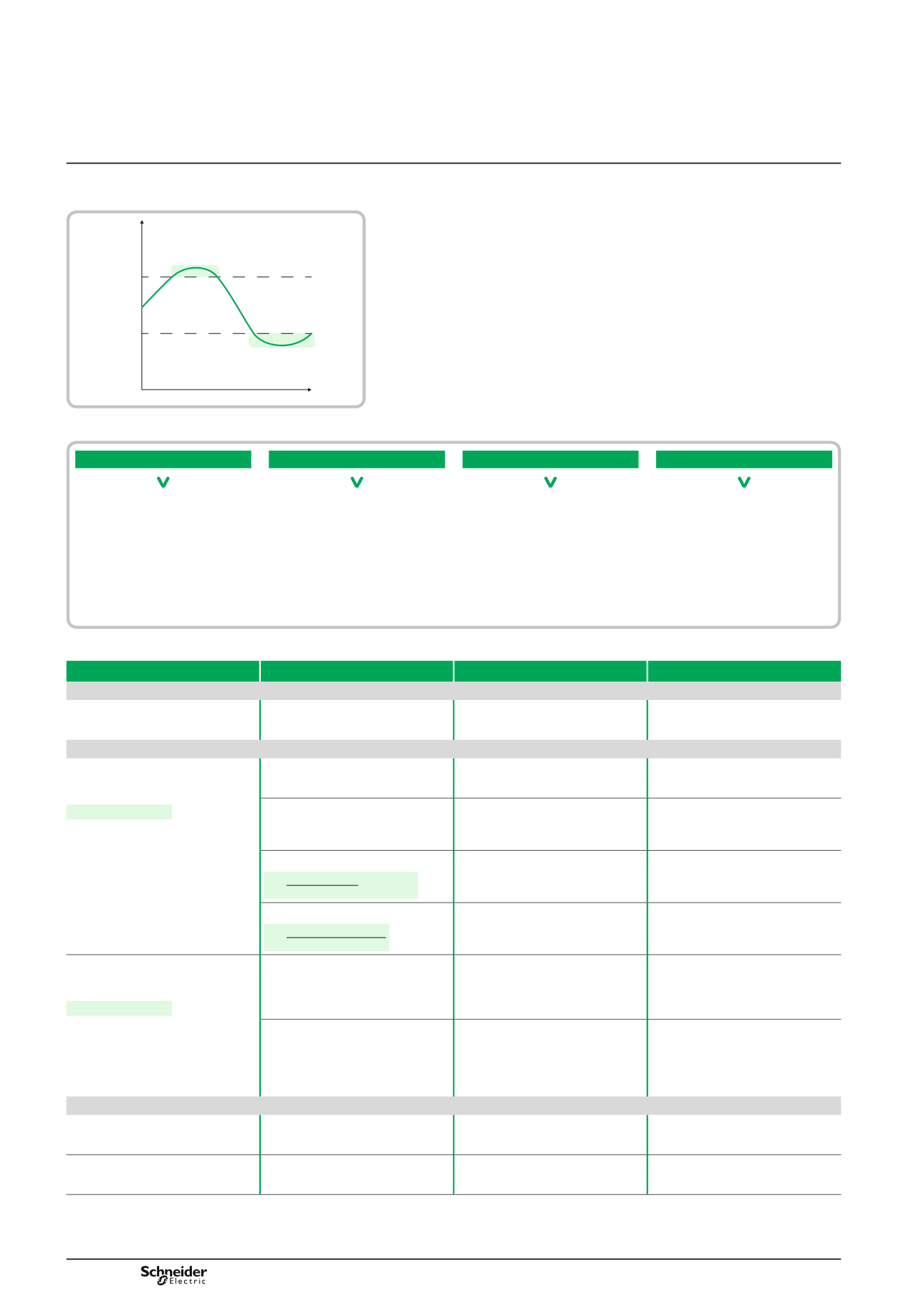

522
ClimaSys
Thermal management system
Thermal balance
6 -
Determining the type of thermal device and its power: Psyst
If Tid
min
< Tfi
min
No need for a thermal system;
a circulation fan may be used
to even out the temperature.
If Tid
min
> Tfi
min
Need for a thermal system:
resistance heater
1- Permanent operation of the
switchboard
Psyst = K x S (Tid
min
- Te
min
) - Pd
2- Discontinuous operation
Psyst = K x S (Tid
min
- Te
min
)
If Tid
max
< Tfi
max
Need for a thermal system:
ventilation, fan, exchanger,
cooling unit.
Psyst = Pd - K x S (Tid
max
- Te
max
)
Psyst = 800 - 5.5 x 4.13 x
(40 - 35)
~ 690 W
If Tid
max
> Tfi
max
No need for a thermal system;
a circulation fan may be used
to even out the temperature.
Temperature conditions Solution
Advantages
Constraints
Circulating
Avoid hot spots.
Install circulation fans in the enclosure. Highly economical solution requiring
no maintenance, easy to install;
Installation IP conserved.
The amount of heat evacuated
is relatively low.
Cooling
Final temperature Tid
max
desired in
the enclosure at least 5°C higher than
the ambient temperature Te
max
.
Tid
max
≥ Te
min
+ 5°C
Oversize the enclosure or
the wall-mounting enclosure.
Economical solution requiring no
maintenance, easy to install;
Installation IP conserved.
The amount of heat evacuated is
relatively low, larger dimensions.
Install ventilation louvres.
Highly economical solution requiring
no maintenance, easy to install.
The amount of heat evacuated is low,
it depends on the layout of the
components, reduced IP
(entry of dust).
Install fans for introducing fresh air.
Ø =
Psyst
(Tid
max
- Te
max
) x 3.1 (m
3
/h)
Economical solution, easy to install;
large amount of heat evacuated;
possible temperature control.
Regular filter maintenance.
IP slightly reduced.
Use an air-air exchanger.
Ø =
Psyst
(Tid
max
- Te
max
) (W/K)
Easy to install; IP conserved during
installation; temperature control as
standard; easy maintenance.
Regular filter maintenance.
Final temperature Tid
max
desired in
the enclosure lower than the ambient
temperature Te
max
+5°C.
Tid
max
≥ Te
max
+ 5°C
Use a cooling unit.
Easy to install; allows the evacuation
of large amounts of heat, even when
the ambient temperature is high,
IP conserved during installation,
temperature control.
Regular filter maintenance, cannot be
used beyond an ambient temperature
of 55°C.
Use an air-water exchanger.
Easy to install; allows the evacuation
of large amounts of heat, even when
the ambient temperature is high,
IP conserved during installation,
temperature control, no filter
to maintain.
Needs a water circuit; consumption
if supplied by the water mains.
Heating
Outside temperature lower than the
lowest acceptable ambient temperature
for the switchgear.
Heat using a resistance heater.
Economical, reliable;
see temperature in the table.
Energy consumption;
space taken up in the enclosure.
Risk of condensation.
Heat using a resistance heater in order
to maintain the temperature beyond
the dew point temperature.
Economical, reliable;
the humidity in the switchboard can
be regulated.
Energy consumption;
space taken up in the enclosure.
T °C
Tid
max
Ti
a
b
Tid
min
t (h)
a:
Tid
max
< Ti
max
∆ T
min
= (Tid
max
- Te
max
)
b
b
∆ T
min
= +5°C: Ventilation
b
b
∆ T
min
= +10°C: Exchanger air-air
b
b
∆ T
min
= -5°C: Cooling unit
b
b
Not depending on (∆ T
min
): Exchanger air-water
b:
Tid
min
> Ti
min
: Heaters
DB300823


















